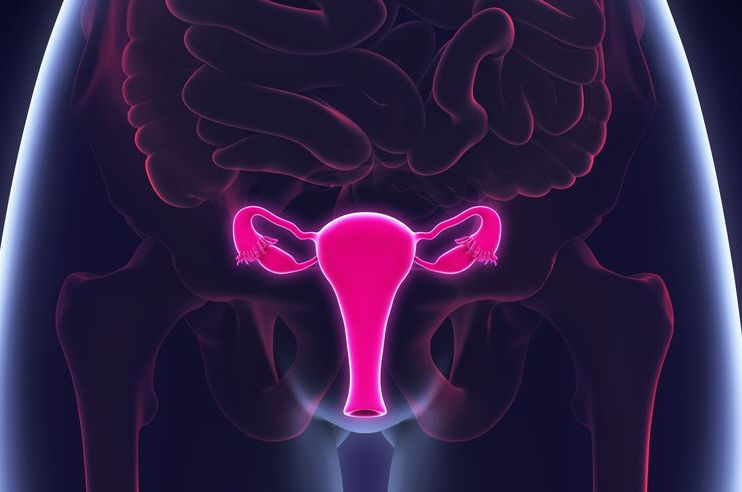Diagnostic Dilatation and Curettage
Diagnostic dilation and curettage was originally intended to detect intrauterine endometrial abnormalities and assist in the management of abnormal bleeding. Newer techniques are available to assess the uterine cavity and endometrial findings.
Diagnostic dilation and curettage was originally intended to detect intrauterine endometrial abnormalities and assist in the management of abnormal bleeding. Newer techniques are available to assess the uterine cavity and endometrial findings. However, dilation and curettage still has a role in centers where advanced technology is not available or when other diagnostic modalities are unsuccessful.
Traditionally, dilation and curettage has been performed in a blind fashion. The procedure can be performed under ultrasound guidance or in conjunction with visualization of the uterine cavity by a hysteroscope.
Indications
Diagnostic dilation and curettage is typically employed to assess endometrial histology. Fractional dilation and curettage also includes assessment of the endocervix and biopsy of the ectocervix and transformation zone.
Indications for a diagnostic dilation and curettage include the following:
Abnormal uterine bleeding: irregular bleeding, menorrhagia, suspected malignant or premalignant condition
Retained material in the endometrial cavity
Evaluation of intracavitary findings from imaging procedures (abnormal endometrial appearance due to suspected polyps or fibroids)
Evaluation and removal of retained fluid from the endometrial cavity (hematometra, pyometra) in conjunction with evaluating the endometrial cavity and relieving cervical stenosis
Office endometrial biopsy insufficient for diagnosis or failed due to cervical stenosis
Endometrial sampling in conjunction with other procedures (eg, hysteroscopy, laparoscopy)
The evaluation of the uterine cavity by dilation and curettage may be helpful when an office technique, such as ultrasound, is unable to fully elucidate the endometrium due to shadowing from leiomyomata, a pelvic mass, or loops of bowel.
Several studies have evaluated the effectiveness of obtaining endometrial tissue by endometrial sampling versus D&C. One study compared aspiration biopsy (Pipelle) with D&C. The D&C procedure was performed without hysteroscopy. This sample of 673 women underwent hysterectomy following the endometrial sampling or curettage. The concordance of results was 67% between endometrial biopsy and hysterectomy versus 70% between D&C without hysteroscopy and hysterectomy. The negative predictive value was 98% for detection of malignancy. In their conclusions, the authors recommended a presampling evaluation of the endometrium by a technique such as transvaginal ultrasound.
Another study of 366 women evaluated histopathologic findings obtained by hysteroscopically directed biopsies, versus pathology results of tissue obtained at D&C. Concordance of results for the 2 procedures was 88.8%. In their conclusions, the authors stated that although hysteroscopy with directed biopsy was adequate for obtaining diagnosis from focal lesions, it may not be sufficient for diagnosis of all pathologic findings in the endometrium, including hyperplasia. They recommended global endometrial sampling, such as by D&C, be included for more thorough diagnosis.
Dilation and curettage may also be a therapeutic procedure. Examples of this use include the following:
Removal of retained products of conception (eg, incomplete abortion, missed abortion, septic abortion, induced pregnancy termination)
Suction procedures for management of uterine hemorrhage
Treatment and evaluation of gestational trophoblastic disease
Hemorrhage unresponsive to hormone therapy [1]
In conjunction with endometrial ablation for histologic evaluation of the endometrium
Contraindications
There are few contraindications to gentle office dilation and curettage, but a more vigorous examination may require an operative suite with regional or general anesthesia. Paracervical block or intravenous sedation with an anesthesia team standing by for assistance may also be an option. Intolerance to office examinations or procedures may determine the setting for the procedure.
Absolute contraindications to dilation and curettage include the following:
Viable desired intrauterine pregnancy
Inability to visualize the cervical os
Obstructed vagina
Relative contraindications to dilation and curettage include the following:
Severe cervical stenosis
Cervical/uterine anomalies
Prior endometrial ablation
Bleeding disorder
Acute pelvic infection (except to remove infected endometrial contents)
Obstructing cervical lesion
These contraindications may be surmounted in some cases. For example, magnetic resonance imaging may define the anatomy of the cervical or uterine anomaly, allowing safe exploration of the endocervix and endometrium.
Complications
Complications can occur at the time of diagnostic dilation and curettage. Careful performance of the procedure should minimize these events. Possible complications include the following:
Bleeding or hemorrhage
Cervical laceration
Uterine perforation
Postprocedural infection
Postprocedural intrauterine synechiae (adhesions)
Anesthetic complications
Complications, particularly uterine perforation, may be increased in a patient with a recent pregnancy or gestational trophoblastic disease, prior endometrial ablation, distorted anatomy, cervical stenosis, or current uterine infection.
Cervical Injury
Laceration of the cervix primarily occurs during traction, with a counterforce applied during dilation. It seems to occur most frequently with use of a single-tooth tenaculum, especially when it is placed vertically on the lip of the cervix. A Bierer multi-toothed tenaculum penetrates less deeply into the cervical tissue and transfers force over a greater area, potentially decreasing the risk of laceration.
Lacerations are generally managed with an interrupted or running interlocking dissolvable suture. The same technique would be applied for a laceration of the posterior cervical lip.
Placement of a tenaculum is not recommended at the lateral aspect of the cervix because of the location of the cervical branches of the uterine artery.The risk of laceration is reduced by reducing force at dilation, using more tapered Pratt dilators or osmotic preparation before the procedure with laminaria or prostaglandin.
Uterine Perforation
Uterine perforation is one of the more common complications of dilation and curettage. Risks are increased when dealing with a pregnant or recently postpartum uterus (5.1%) and are less frequent at the time of a dilation and curettage remote from pregnancy (0.3% for premenopausal women and 2.6% for postmenopausal women).
The instruments most commonly associated with uterine perforation are the uterine sound or dilators. If perforation is known to have occurred with a blunt instrument, observation of vital and peritoneal signs for several hours is all that is needed. If suspicion that a sharp instrument, such as a curette, has perforated the uterus or if the fat has been retrieved by curettage, then intraabdominal injury must be excluded by laparoscopy. Active bleeding may necessitate a laparotomy.
Infection
Infection related to diagnostic dilation and curettage is rare and is most likely when cervicitis is present at the time of the procedure. One study of infections related to dilation and curettage documented a 5% incidence of bacteremia following dilation and curettage with a very rare incidence of septicemia.
Prophylactic antibiotics are not recommended for any dilation and curettage, including for those women who generally require subacute bacterial endocarditis prophylaxis.
Intrauterine Adhesions
Curettage after delivery or abortion may result in endometrial injury and subsequent development of intrauterine adhesions, termed Asherman syndrome. The development of uterine synechiae may also be associated with prior endometrial ablation procedures. Intrauterine adhesions may make future diagnostic curettage more difficult and increase the risk of uterine perforation. Previous procedures such as endometrial ablation may also increase the risk of cervical stenosis.
A study by Hooker et al reported that intrauterine application of auto-crosslinked hyaluronic acid gel after D&C for miscarriage in women with at least one previous D&C may reduce the incidence and severity of intrauterine adhesions, however, it does not eliminate the process of adhesion formation completely. Further studies are needed to evaluate these results.
Trophoblastic Embolization
Embolization of trophoblastic tissue in the systemic circulation is a very rare complication of dilation and curettage for removal of gestational trophoblastic disease. This event has been associated with thyroid storm, cardiovascular collapse, and death. A diagnostic dilation and curettage in patients for whom gestational trophoblastic neoplasia is suspected should be performed in an operating room with anesthesia.

Lorem ipsum dolor sit amet, consectetur adipiscing elit. Phasellus ac aliquam velit. Phasellus dapibus cursus erat, quis consequat urna efficitur non. Phasellus cursus, erat quis mollis lobortis, urna risus hendrerit metus, id dictum metus purus vel magna. Nulla non purus sit amet arcu convallis egestas
Lorem ipsum dolor sit amet, consectetur adipiscing elit. Phasellus ac aliquam velit. Phasellus dapibus cursus erat, quis consequat urna efficitur non. Phasellus cursus, erat quis mollis lobortis, urna risus hendrerit metus, id dictum metus purus vel magna. Nulla non purus sit amet arcu convallis egestas
Lorem ipsum dolor sit amet, consectetur adipiscing elit. Phasellus ac aliquam velit. Phasellus dapibus cursus erat, quis consequat urna efficitur non. Phasellus cursus, erat quis mollis lobortis, urna risus hendrerit metus, id dictum metus purus vel magna. Nulla non purus sit amet arcu convallis egestas

COSMETIC SURGERY
Lorem ipsum dolor sit amet, consectetur adipiscing elit. Ut elit tellus, luctus nec ullamcorper mattis, pulvinar dapibus leo.

COSMETIC SURGERY
Lorem ipsum dolor sit amet, consectetur adipiscing elit. Ut elit tellus, luctus nec ullamcorper mattis, pulvinar dapibus leo.

COSMETIC SURGERY
Lorem ipsum dolor sit amet, consectetur adipiscing elit. Ut elit tellus, luctus nec ullamcorper mattis, pulvinar dapibus leo.
